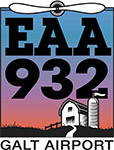Why do pilots use checklists?
The purpose of checklists is to make sure specific actions are performed that are necessary for the safety of flight. Relying on memory to perform a set of tasks is perfectly fine as long as it is followed up by using a checklist to confirm that all of the required actions were indeed completed. Consistent use of checklists prevents mistakes and reduces the chance of accidents, especially in non-routine circumstances such as emergencies.

